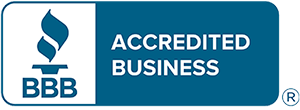
Ceiling fans are one of the most underrated ways to enhance comfort and reduce energy costs. By boosting air circulation and assisting your HVAC system, ceiling fans and energy efficiency are truly a match made in heaven. They offer a practical, energy-efficient way to keep cool while easing strain on your AC—potentially sparing you from unnecessary air conditioning repair.
In this blog, the experts at Perfect Air & Water Services break down how ceiling fans can improve your comfort while avoiding energy waste with increased HVAC efficiency. We'll also provide some HVAC efficiency tips that put to good use ceiling fans.
Comfort vs. Temperature: The Effect of the Wind-Chill Effect Indoors
Ceiling fans don’t actually lower the room temperature—they make you feel cooler by increasing air movement across your skin. This is known as the wind-chill effect, and it can make a room feel up to 4 degrees cooler without adjusting the thermostat. That means you stay comfortable and enjoy the benefits of indoor air circulation from your ceiling fan while using less AC—helping reduce your electric bill in summer.
The Best of Both: Benefits of Using Fans and Air Conditioning Together
There are several advantages to using ceiling fans and air conditioning at the same time, especially when it's very hot outside. By using both, you increase HVAC efficiency and keep your home cooler with less effort from your cooling system.
Top perks of using ceiling fans and AC together:
- Ceiling fans help lower HVAC load by distributing cool air more evenly throughout the room. Limiting HVAC stress is important, because it can prevent a breakdown that may result in premature AC or furnace installation.
- Using overhead fans improves your indoor comfort by eliminating hot spots and enhancing circulation.
- Running both ceiling fans and AC can reduce overall energy use. If you have a home automation system, you can even fine-tune your smart thermostat settings to increase the temperature slightly while your ceiling fan is running.
Clockwise vs. Counterclockwise Ceiling Fan Rotation: Which Direction Should a Fan Spin?
To maximize the benefits of your ceiling fans year-round, it’s important to set the blades to rotate in the right direction for the season. The direction affects how air moves, which can either make you feel cooler or gently recirculate warm air so you feel warmer.
When to rotate ceiling fans counterclockwise
On hot days, ceiling fans should turn counterclockwise at a faster setting. This creates a breeze that pushes cool air downward, enhancing the wind-chill effect and causing you to feel cooler.
When to spin ceiling fans clockwise
In the winter, set your fan to turn clockwise on a gentle setting. This lifts cooler air and draws warm air downward from the ceiling, making the space feel cozier without touching your thermostat.
Things to Look for in a Ceiling Fan
Choosing the ideal ceiling fan depends on a few critical considerations, including blade design, airflow rating and room dimensions. First, look for fans with a good balance of ECFM airflow and blade pitch to deliver efficient air circulation in your home:
- ECFM refers to the amount of air a fan moves—the cubic feet per minute, or CFM—per watt of electricity consumed. Fans with higher ECFM are more energy efficient.
- Blade pitch refers to the angle of the blades. A sharper blade pitch moves more air but can also put extra load on the motor.
Also, consider room size when sizing a ceiling fan—a fan that’s too small won’t circulate sufficient air, while one that’s too large may be overpowering for the room.
Boost Your HVAC Efficiency With the Team from Perfect Air & Water Services
At Perfect Air & Water Services, our HVAC experts can help you enjoy year-round comfort while reducing strain on your heating and cooling systems. From efficient ceiling fan strategies and air conditioning installation to smart thermostats and furnace repair, we offer comprehensive services that fit your lifestyle. Reserve your appointment by calling 848-361-4516 today.

